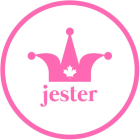The importance of choosing your brand colours and their impact on your audience
You’re at a crossroads. On one end you see a gas station, and its roof is red. It reminds you of the empty sign on your car’s dashboard. You need a refill. The other end you see a drugstore, and its banner is green, reminding you that you need to look after yourself. Perhaps you need to buy a new medicine, or perhaps you need a refill.

The corner diagonal to it, you see a café, and it’s blue, calling you towards delicious food, maybe it is merely a craving, or maybe your stomach needs a refill. And the final corner faces this café, and it is a building coloured faint yellow, and it entices you to check it out, maybe you need a change, a new place to call home. Four corners on a crossroad, and four different colours that appeal to your bare necessities. Welcome to colour theory.
Colours are integral to your brand’s identity, and definitive in communicating your ideals, and your ideas to your audience, but they also help entice and evoke unconscious wants and needs.
“Through its sensual appeal, colour can move the mind and emotions of a spectator. This understanding of the interconnection of the senses, intellect, and emotions is also, broadly construed, synesthetic in nature.” – Joshua Yumibe
What does a colour say to you?
Blue is a colour of trust, and a colour that makes you feel secure. It also communicates to you that something is responsible and capable. It’s a reason why you find it prominently used by social media channels. The other colour that is widely used by social media channels is red, because it is energetic, and it evokes aggression or rather action. Red works for Pinterest, because it prompts you to toggle through pictures, blue works for Facebook, because it gives a sense of belonging.
But, using the wrong colour can sometimes be disastrous, and inappropriate. Recently, a microblog circulated on Tumblr, featuring an image of a school hallway, with a red pattern on the ground, that resembled a river. At first glance, it looked like blood, even though the explanation given for it was the same as the above example of how and why red works as a prompter. But, in a school, with that design, the red unfortunately resembled blood.
The how of choosing your brand colour
So, how do you decide which colour best suits your brand? Factor in your audience, the age, the income bracket, its ideological inclinations. Factor in your message, what you stand for, what you want people to think of when they look at your colours, what you want people to assume when they see your colours, and what you do not want them to assume. Factor in the emotions you want to elicit.
Colours are reflections that your eyes capture, a play of light, an interpretation by design. Our optics can only perceive colours based on how we are designed. But, the interpretation of these interpretations can be tweaked, and you have the choice.
Pay attention to this line. The yellow compelled you to focus before the words did. A reason why it is used for traffic signs, and everything that demands caution. Most purchases are pre-determined by consumers based on how the colours speak to their moods and emotions and likes and dislikes.
Choosing the right colour also means identifying your visual brand identity and implementing it in all your promotional material, marketing, products, and services. Figuring where your brand lies on the brand personality spectrum is key to establishing colours for it. Is it perceived to be athletic, quirky, sophisticated, accessible or something else?
Most brands choose one unique colour that stands out and can be identified at a glance and use a couple of neutral colours to accentuate the primary colour.
Some companies can toggle multiple colours for their brand and make it work, and they usually play with variations of red, green, blue and yellow. But, using complementing variants works, like Asana’s logo.
But if you wish to have more than one colour, it is recommended to use analogous variations of your primary colour, as seen in Mastercard’s logo. Similarly, using contrasting colours is an excellent option. Pepsi’s red and blue separated by the white are instantly recognisable.
Ultimately, establishing one primary brand colour gives you the creative freedom to pair it with neutrals, contrasts, analogous, or bright colours. And selecting the right primary colour requires figuring out your brand identity.
You see the colour purple, and you think of energy, vigour, excitement, proactivity, creativity, you think of Jester, and you feel that you want to work with us, find your brand identity and create something exciting together. And we feel the same.
